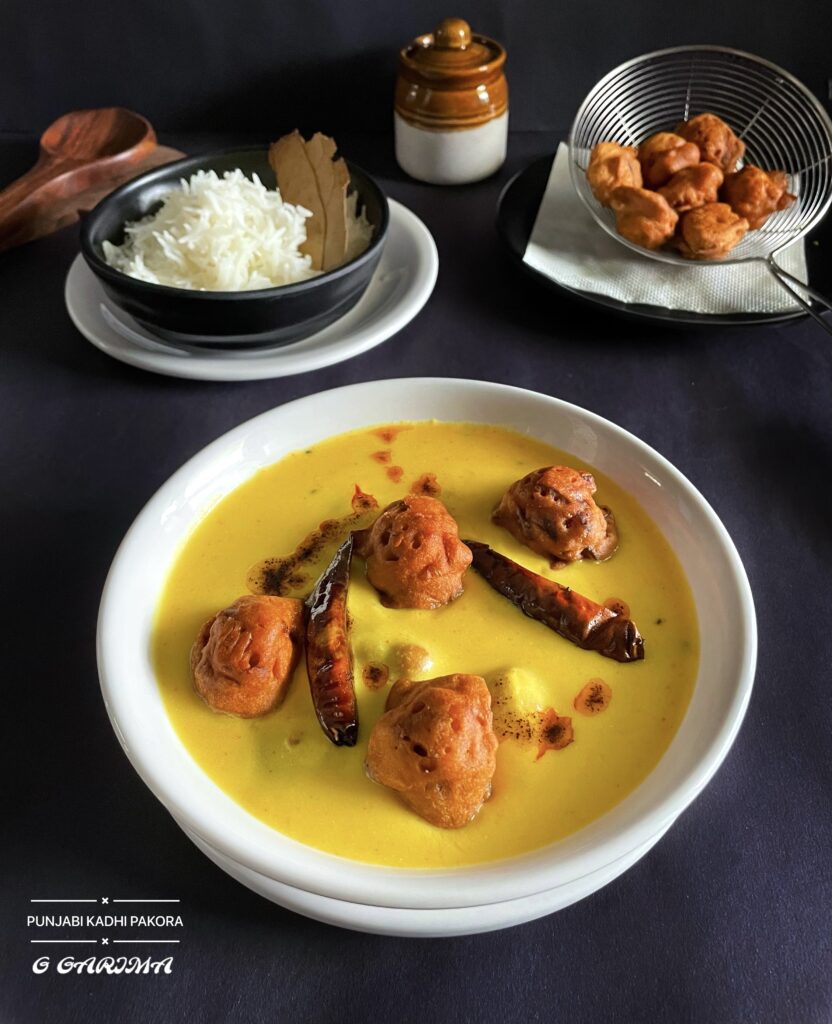18 May, 2023
PUNJABI KADHI PAKORA RECIPE
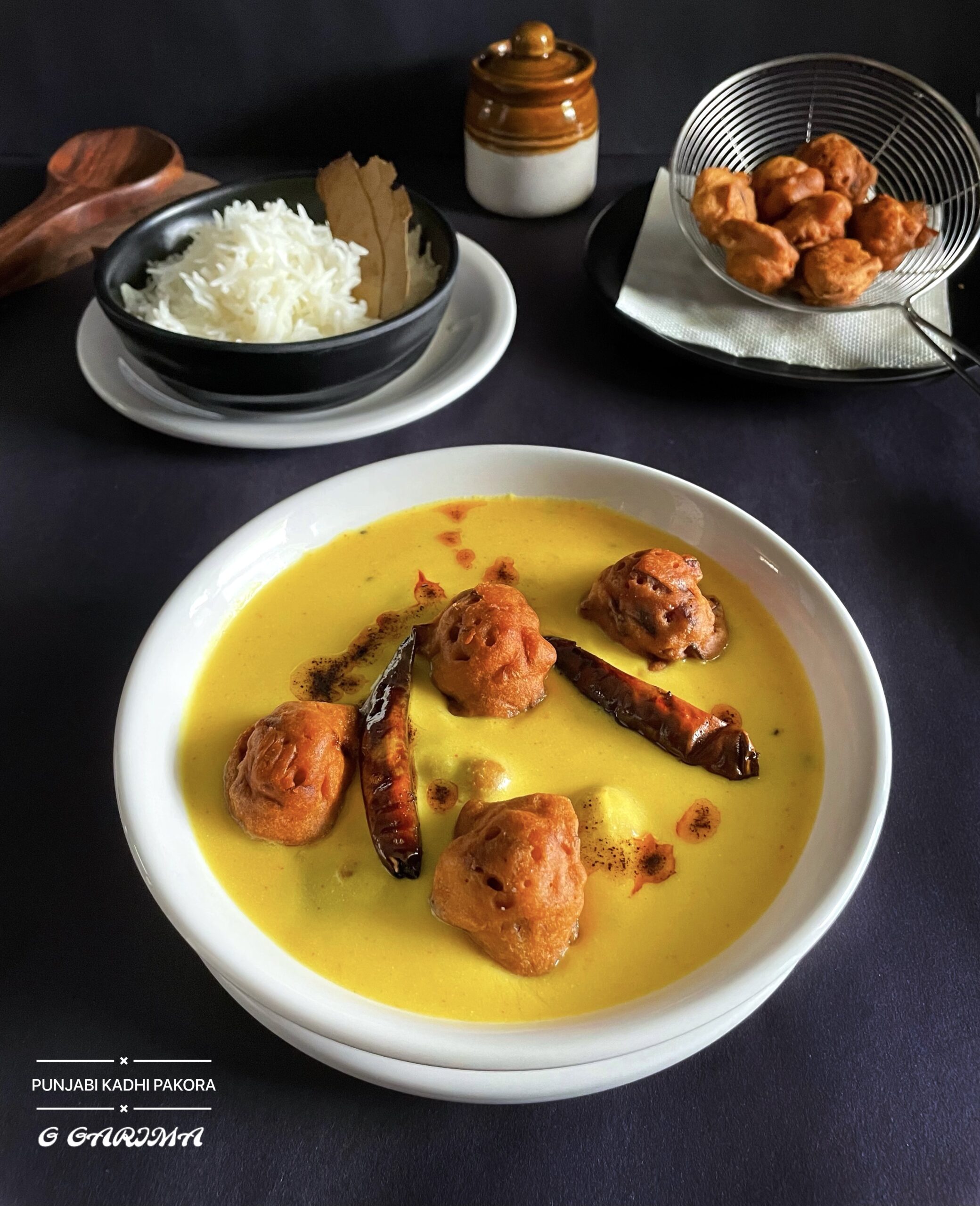
Punjabi Kadhi Pakora, a quintessential North Indian dish, amalgamates the richness of a tangy Yogurt based Curry (Kadhi) with the crispiness of deep fried Gram Flour Fritters (Pakoras). This culinary delight is cherished for its tangy and savory flavors, making it a beloved comfort food for many.
The recipe typically calls for ingredients like Gram Flour (Besan), Sour Buttermilk or Sour Curd and some Spices. KADHI PAKORA is often enjoyed hot with Steamed Rice or Chapatis (Indian Breads), enhancing the overall dining experience.
Prominent Flavor
The defining and essential element that imparts a distinct taste to Punjabi Kadhi is the generous inclusion of coarsely crushed Whole Coriander Seeds. This ingredient plays a pivotal role in the traditional recipe of Punjabi Kadhi, contributing significantly to its aromatic and flavoring profile.
Three Main Steps:
Punjabi Kadhi Pakora making consists of three main steps:
First is “Gram Flour and Curd/Buttermilk Mixture Making”, Second is “Pakora Making” (crispy on the outside and soft on the inside Pakoras), Third is “Tempering”.
Note: If the curd is not sour, then keep the curd overnight at room temperature and use it when it turns sour.
Variations and Regional Adaptations
While the base recipe remains consistent, regional variations are also there. From the northern states to the southern regions of India, Kadhi takes on diverse forms and flavors. Even within the Punjab region, slight differences in recipes emerge among households, adding to the culinary charm of this dish.
In various regions, alteration in spices, thickness, and additional ingredients mark the uniqueness of each rendition. For instance, in Gujarat, the Kadhi may lean towards being slightly sweeter due to the addition of the jaggery or sugar. Rajasthan’s version might exhibit a spicier profile with a more tempered consistency.
From the addition of seasonal vegetables to the use of Buttermilk or yogurt variations, the adaptability of Kadhi in different states showcases the diversity and creativity within the country’s culinary landscape.
The recipe I’m sharing today is the way my mother cooks it. Let’s get started with the recipe.
PUNJABI KADHI PAKORA RECIPE:
| Preparation Time | Cooking Time | Serves | Course |
|---|---|---|---|
| 15 minutes | 40 minutes | 4 | Main |
INGREDIENTS:
| For Curd Mixture | For Pakoras | For Tempering |
|---|---|---|
| 1 cup Sour Curd (Beaten) | 1 cup Gram Flour (Besan) | 2 tsp Ghee (Clarified Butter) or Mustard Oil |
| Water (2-3 cups or as Required) | ¼ tsp Turmeric Powder (optional) | 1 tsp Fenugreek Seeds (Methi Dana) |
| 4-5 tsp Gram Flour (Besan) | 1 tsp Red Chilli Powder | ¼ tsp Hing (Asafoetida) |
| 1 tsp Turmeric Powder | 1 tsp Coriander Powder | 1 tsp Mustard Seeds |
| 1 tsp Red Chilli Powder | Salt To Taste | ½ tsp Cumin (Jeera) |
| 1 tsp Coriander Powder | 1 tsp Coriander Seeds (roasted & coarsely crushed) | 1 tsp Coriander Seeds (roasted & coarsely crushed) |
| Salt To Taste | 2 Onions (chopped) | 1 tsp Ajwain (Carom Seeds) |
| 1 inch Ginger (grated) | 2 nos Dry Red Chillies (whole) | |
| 1 Green Chilli (chopped) | 1 Onion (chopped) | |
| Water or Buttermilk (½ cup or as required) | 1 tsp Ginger (chopped) | |
| Oil for deep frying |
METHOD:
1. For Curd Mixture:
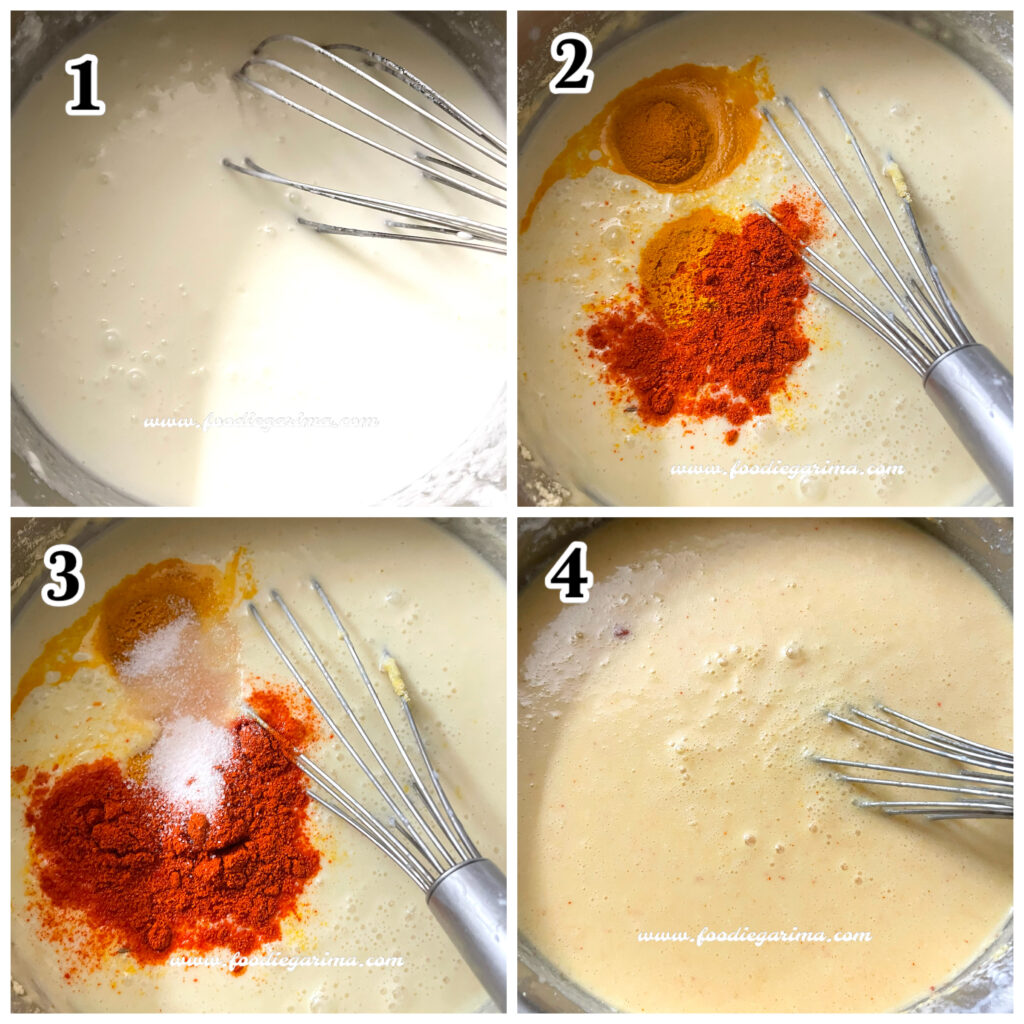
- In a large bowl, add beaten Curd and Water. Whisk it properly.
- Now add Gram Flour (Besan), Turmeric Powder, Red Chilli Powder, Coriander Powder and Salt. Whisk everything well and make sure there are no lumps in the mixture.
- Keep this Curd Mixture aside for further use.
- Now we’ll prepare the pakoras for it.
2. Prepare Pakoras:
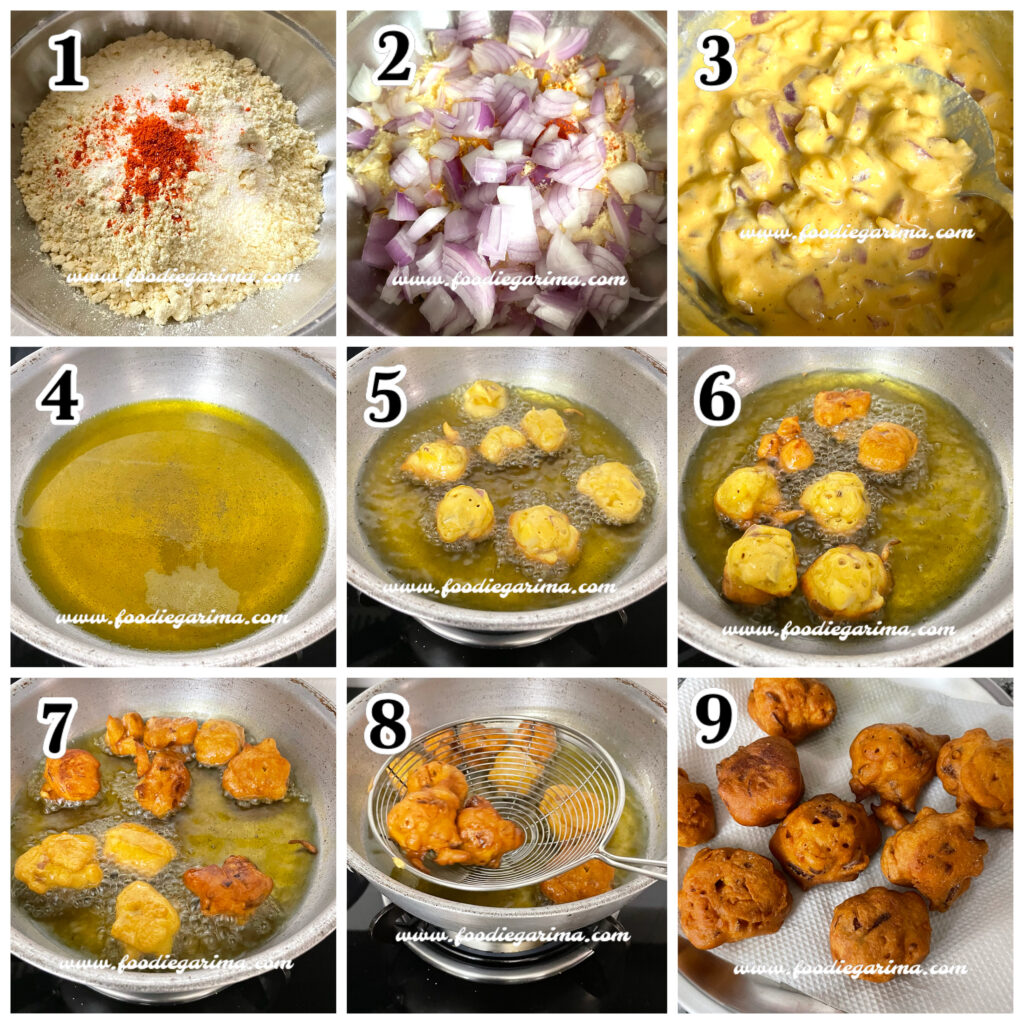
- In a bowl, add Gram Flour (Besan), Turmeric Powder, Red Chilli Powder, Coriander Powder, Salt, Coriander Seeds (roasted & coarsely crushed), Onions (chopped), Ginger (grated) and Green Chilly (chopped).
- Add Water gradually to form a thick batter. Ensure the batter is not too runny. You can use Buttermilk in place of water.
- Heat Oil in a wok or deep frying pan.
- Once the Oil is hot, drop spoonfuls of the batter into the Oil to make small pakoras.
- Deep fry them until they turn golden brown and crisp on medium to low flame.
- Don’t over fry them.
- Remove the deep fried Pakoras to a plate after done and keep it aside for further use.
3. For Tempering:
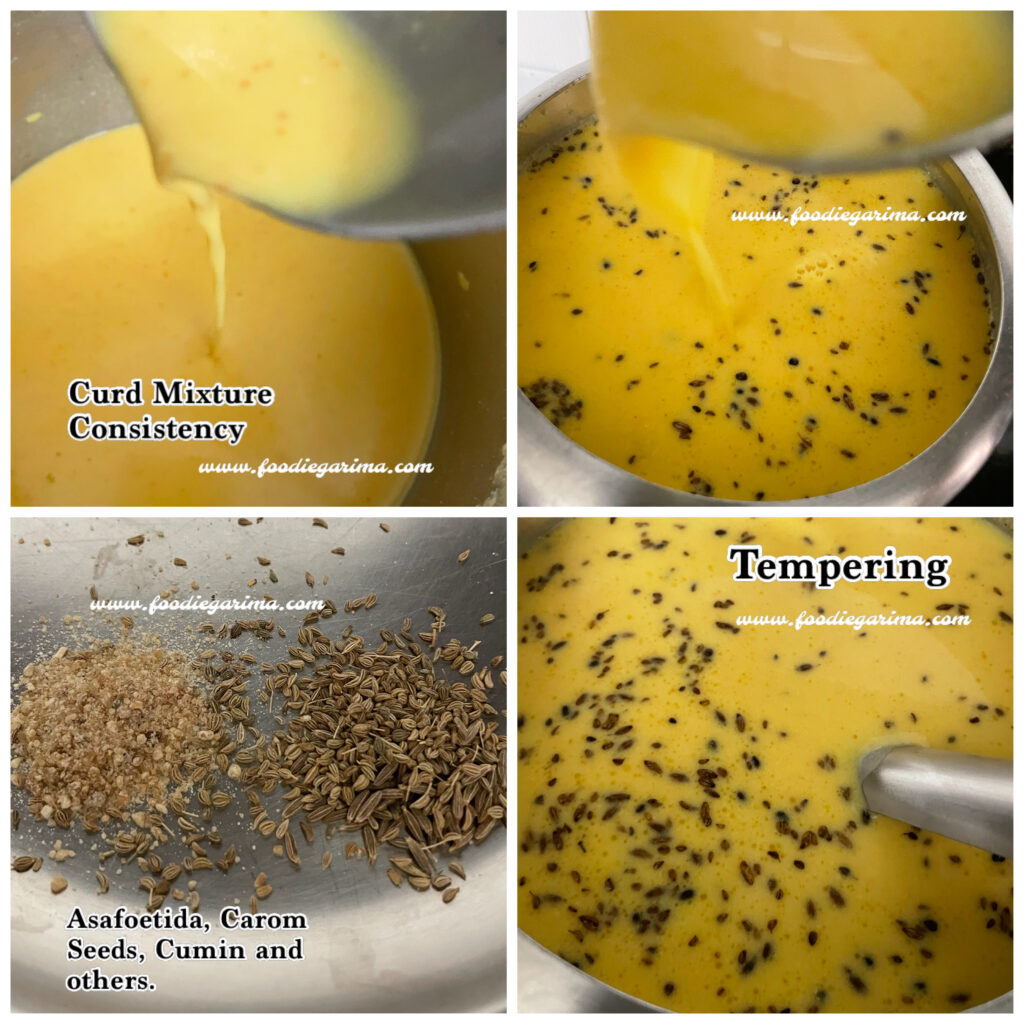
- Heat a wok (kadhai) or heavy bottom pan and add Ghee or Oil to it. (Mustard oil is highly preferred for Kadhi tempering but Clarified Butter (Ghee) or any other Oil will also work).
- Once Ghee is melted, add Fenugreek Seeds (Methi Dana), Hing (Asafoetida), Mustard Seeds, Cumin (Jeera), Ajwain (Carom Seeds), crushed Coriander Seeds, dry Red Chilli (whole) and let the seeds crackle and release their aroma. (Fenugreek seeds will turn dark brown in color).
- Add chopped Onions and sauté until translucent.
- Then add chopped Ginger and cook for 20 seconds.
- Tempering is ready to use.
4. Cooking Kadhi:
- At the stage when our tempering is ready, pour the prepared Besan and Curd Mixture to this tempering while stirring continuously.
- Keep stirring the mixture on high heat and let it come to a boil.
- Once the Kadhi comes to a boil, reduce the heat and let it simmer for 30 to 40 minutes, stirring occasionally. It is very important to stir it.
- The Besan and Curd mixture should be cooked and the rawness of flour should disappear completely. Let this mixture cook on low flame so that the gram flour indulges completely and we get our perfect delicious Kadhi.
- Cook it patiently for 30 to 40 minutes. The more you cook the Kadhi the better it tastes.
- Adjust the consistency by adding hot water if needed. The Kadhi should have a thin consistency. It should not be thickened.
5. Combining Kadhi and Pakoras:

- Once the kadhi is cooked, add the deep fried crispy Pakoras to the simmering Kadhi.
- Let the Kadhi Pakora simmer for another 5 to 7 minutes on low heat.
- Garnish with fresh Coriander Leaves and serve hot with Steamed Rice or Chapatis.
Second Tempering:
A second tempering can also be added at the end to elevate the flavor or Kadhi.
For this tempering, heat 1 tsp oil in a pan and add 1 tsp Red Chilli Powder and ¼ tsp Hing (Asafoetida) to the hot oil. Turn off the flame. Add this tempering to the Kadhi at the end.
Significance of Simmering in Kadhi Preparation
The name “Kadhi” finds its roots in the process of “Kadhna,” which essentially refers to the simmering-down technique integral to its preparation. The true essence and exceptional texture of Kadhi unfurl through the diligent and patient process of simmering.
It is crucial to allow the Kadhi to simmer for a minimum duration of 30 minutes. During this time, regular stirring is essential. The gradual simmering down of the Kadhi allows the ingredients to harmonize, creating a rich texture while intensifying the infusion of spices and flavors.
Buttermilk And Its Alternative:
In the regions of Gujarat, Rajasthan, Haryana and Punjab, the preparation of Kadhi showcases a distinctive feature – the use of “Buttermilk (Chhaas/Lassi)”. The choice is influenced by the abundance of milk resources in these regions, prompting the utilization of Buttermilk as a base for Kadhi.
The availability of ample milk resources has led to the tradition of incorporating Buttermilk in Kadhi recipes across the regions. However, in cases where Buttermilk is not readily available, an alternative solution emerges: a mixture of Beaten Curd and Water can effectively substitute for Buttermilk.
By blending Water with Beaten Curd, a similar texture and tanginess akin to Buttermilk are achieved, ensuring the dish’s authenticity and flavor profile remain intact.
It is important to note that when substituting with this mixture, the use of “Sour” Curd is recommended. This alternative method enables households to prepare Kadhi without compromising on its taste, allowing for its flexibility in ingredients without sacrificing the essence of this beloved dish.
What Is Buttermilk?
Buttermilk refers to the liquid remaining after churning the butter during the butter making process. This byproduct emerges when milk cream is whipped and then it is soured and then again whipped, resulting in the separation of butter and a residual liquid.
